Select Car Leasing ran nine of the world’s biggest car brand websites through the 'Wayback Website Machine', to find out how car sites looked 20 years ago - and then compared them to the same websites today. As you'll see, they look like they have come not just from a different time, but almost a different world.
Take a plunge to a simpler time, with a world of template grey backgrounds, cringe-inducing stock photos and of course turn of the century Citroen Picassos. Would you trust any of these sites to get your new car? Let us know!
The Ford Motor Company
Featuring their famous old logo, the Ford Motor Company’s website from 2000 looks more like something Henry Ford might have mocked up than a 21st-century website.
Different shaped stock photos are slapped in the centre of an irregularly aligned homepage with a mass of white surrounding it. Unlike today’s slick and snappy customer friendly Ford website, in true business website style its predecessor also displayed several logos from other companies Ford owned at the time, such as Volvo, Mazda and Jaguar.
2000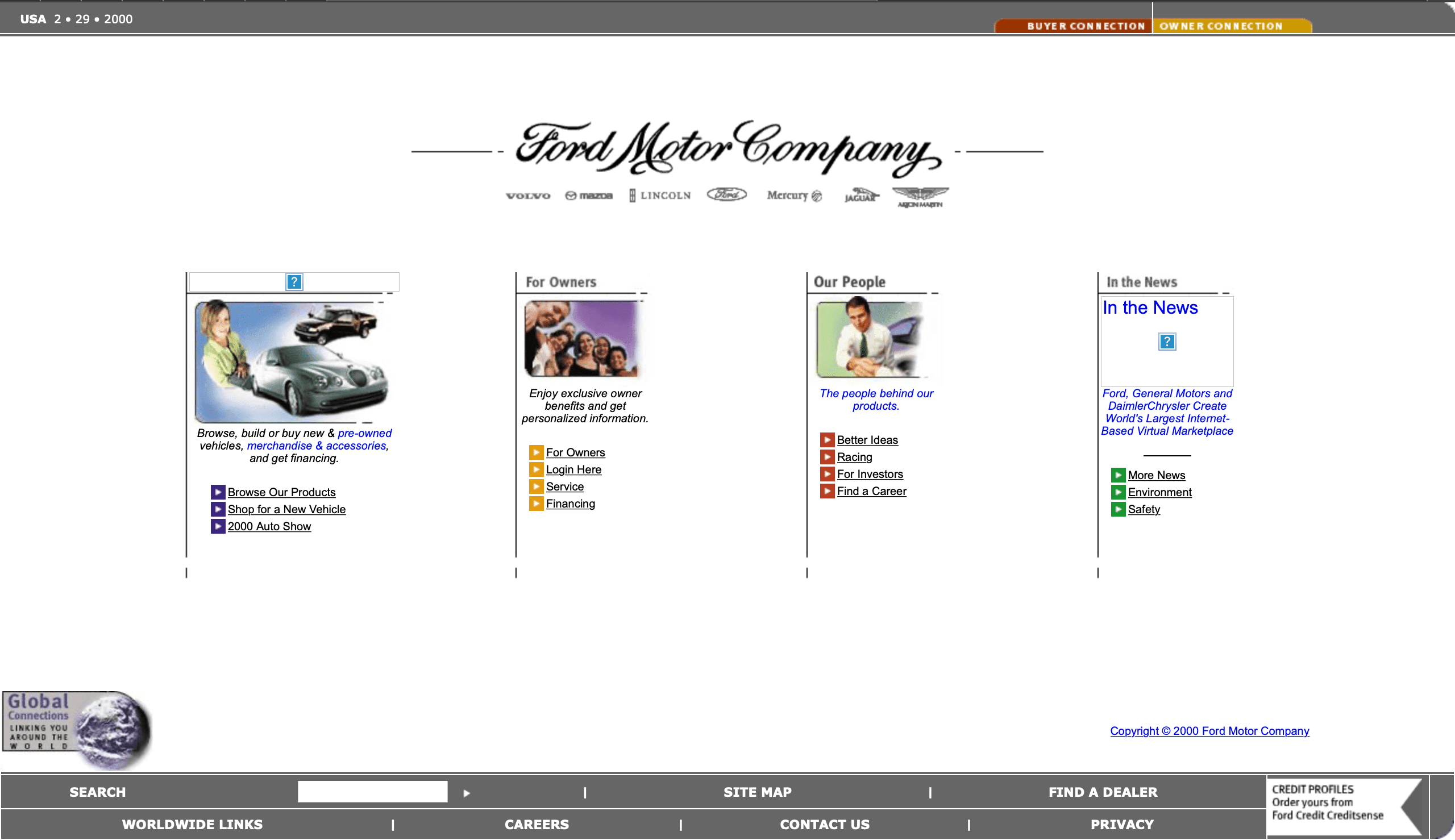
Today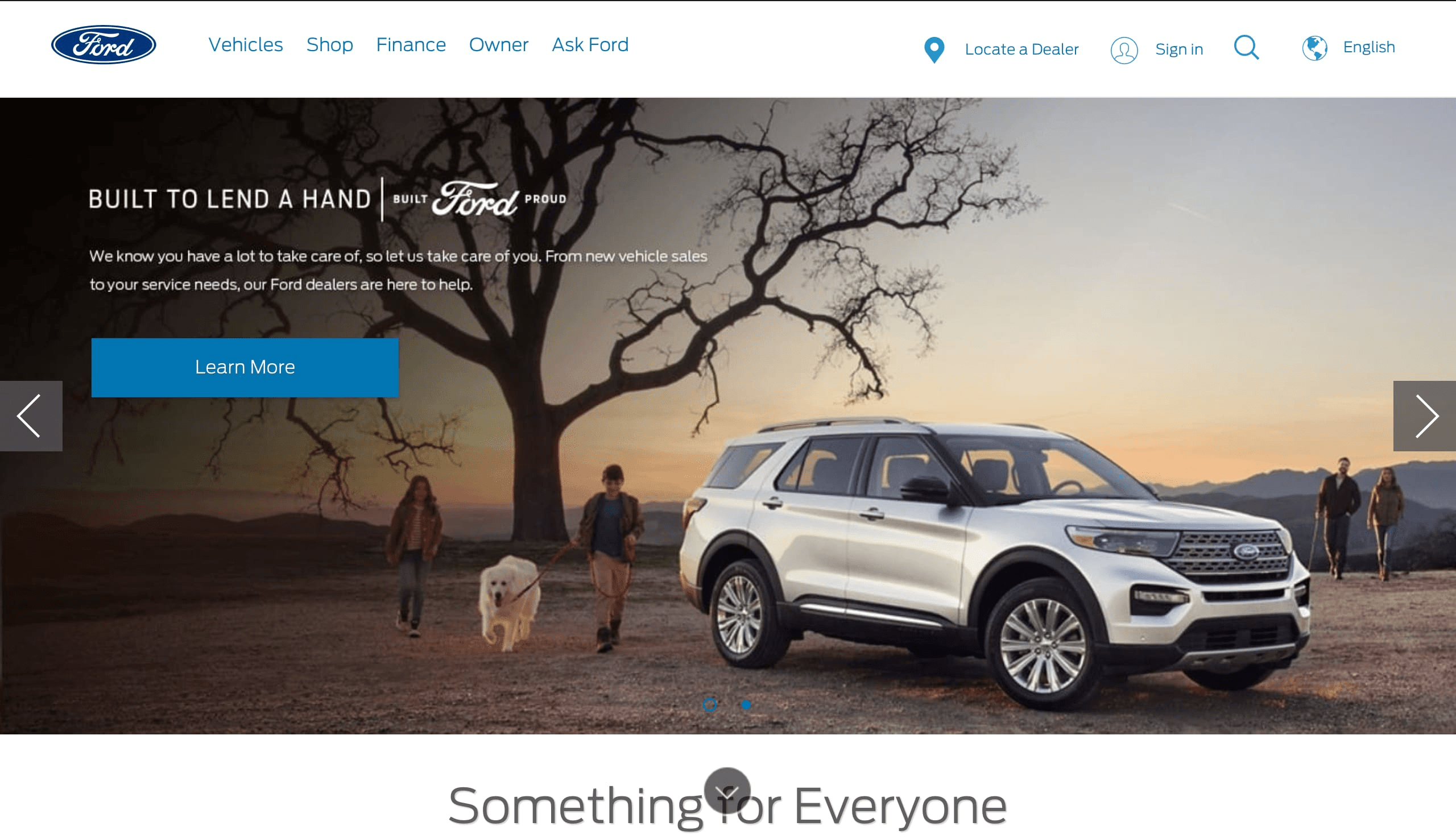
Ferrari
The first thing that springs to mind when you think of Ferrari is Milan, beautiful people and immaculate design. However, the same can't be said about the company’s abysmal homepage back in 2001.
The dull grey background and retro name of “Ferrari World” sits abstractly at the apex of the homepage - but at least you could read it in multiple languages, play games and investigate the uniquely titled 'Life&Style'. However, fast forward to today and Ferrari's website truly embodies the emotion, integrity and tradition that Ferrari is famous for the world over.
2001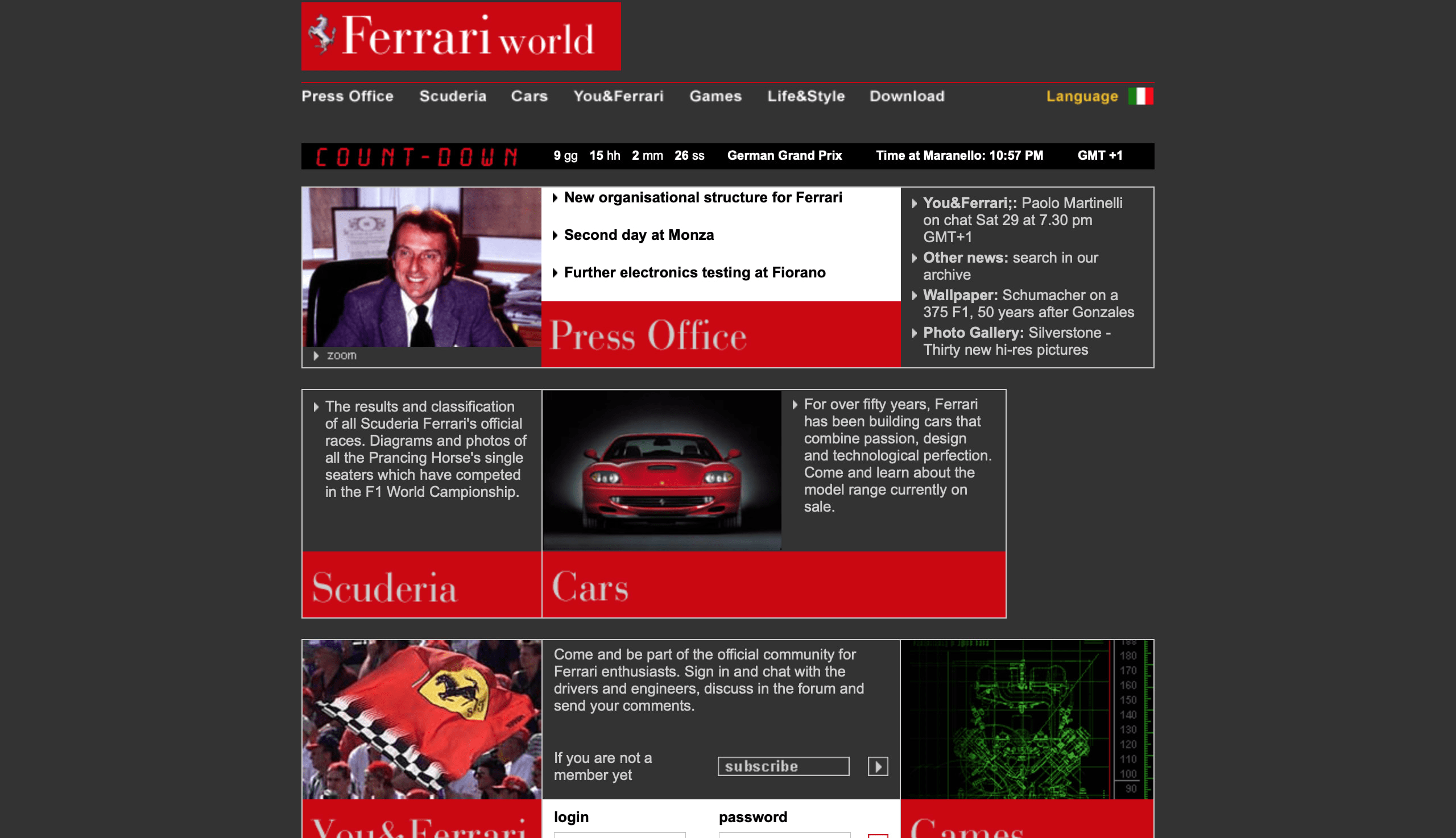
Today
Bugatti
We are not quite sure what to make of this. Bugatti strangely used their online presence to sell “fine leather goods” rather than cars at the turn of the millennium, with the Italian manufacturer's brashly plastered logo the only indication that Bugatti had any association with cars at all, alongside some quite dubious links and information. The year 2020, however, is home to a very different Bugatti site, one that beautifully champions the eye-wateringly quick Bugatti Chiron using a luxuriant bird's eye design style.
2001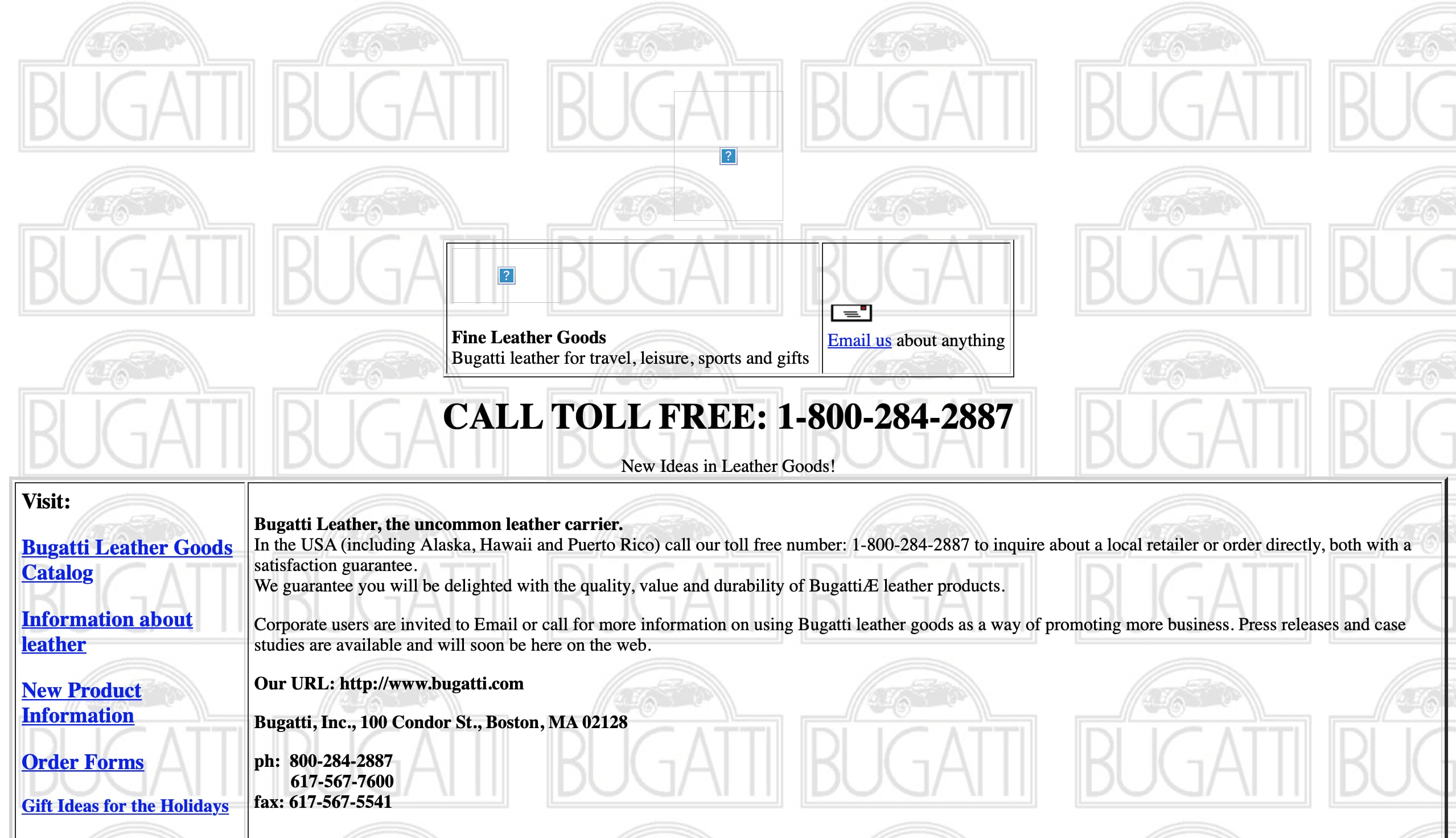
Today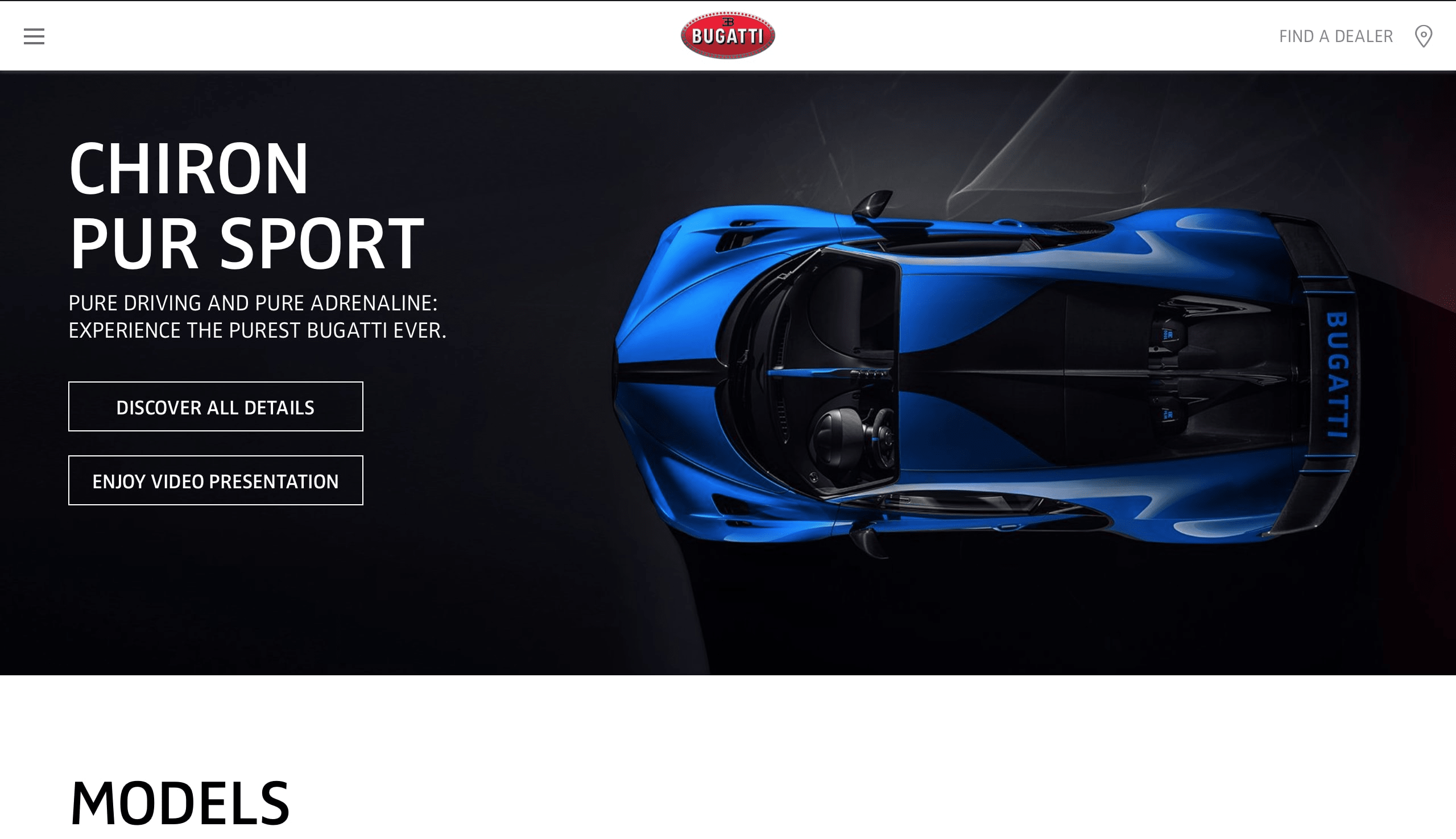
Lamborghini
Back in 2000, Lamborghini was changing hands to the Volkswagen Group as the latter began to bring more and more automotive brands under its wing at the turn of the 20th century.
Lamborghini's website consists of a single black page with strangely indented and aligned paragraphs asking users to sign a guest book to be notified when the site was running again. There might not have been much in the way of a web tech team back then - Lamborghini's desperation even extended to asking their fans for suggestions on what to include on their website once it went live again!
Twenty years later and Lamborghini have built a site that truly does their reputation justice - scroll through stunning shots of the Huracan Evo, Aventador and Urus SUV. The first Lamborghini SUV is impossible to avoid on the new site - we wonder what the brand's bosses would have made of that back in 2000?
2000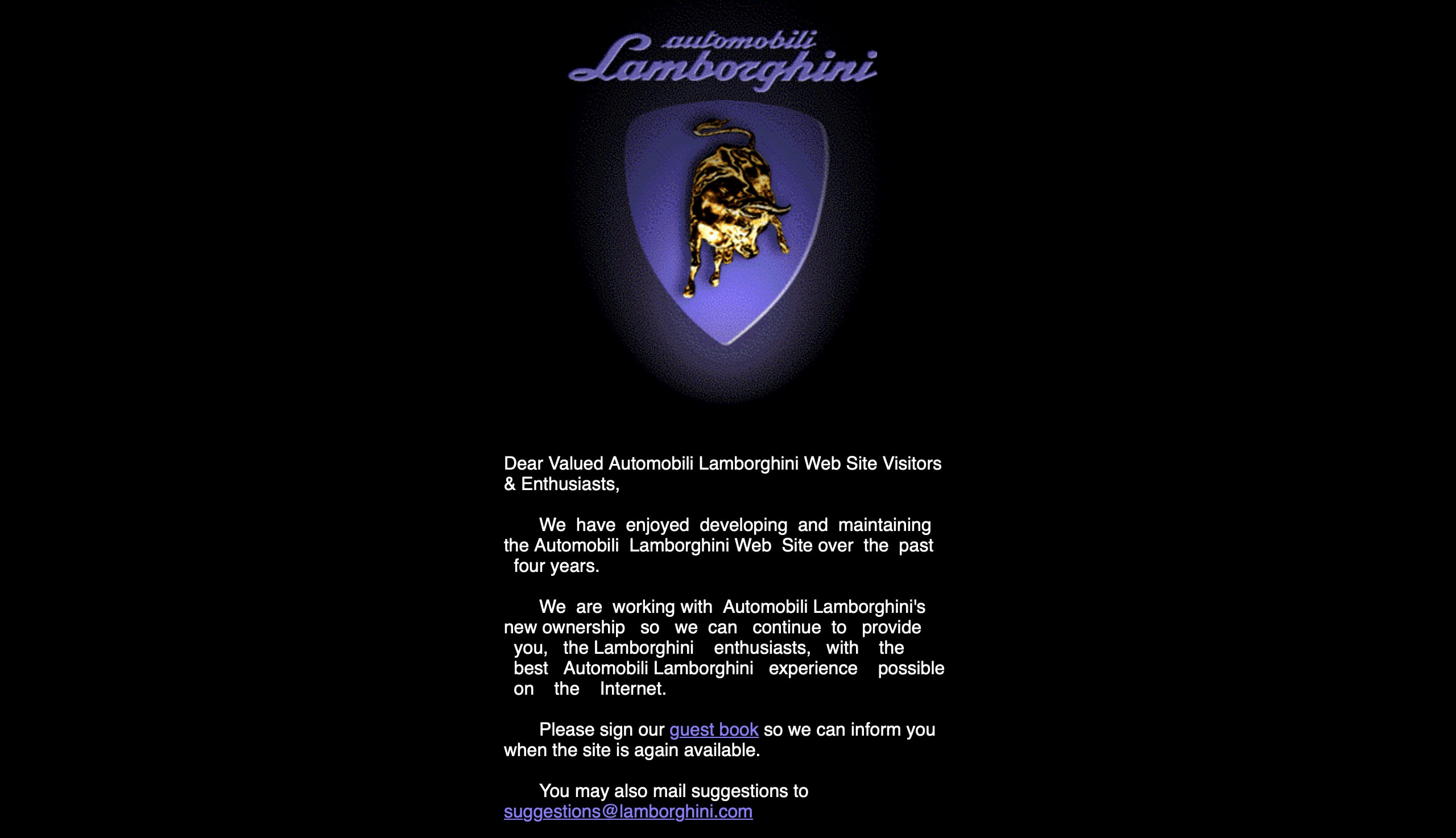
Today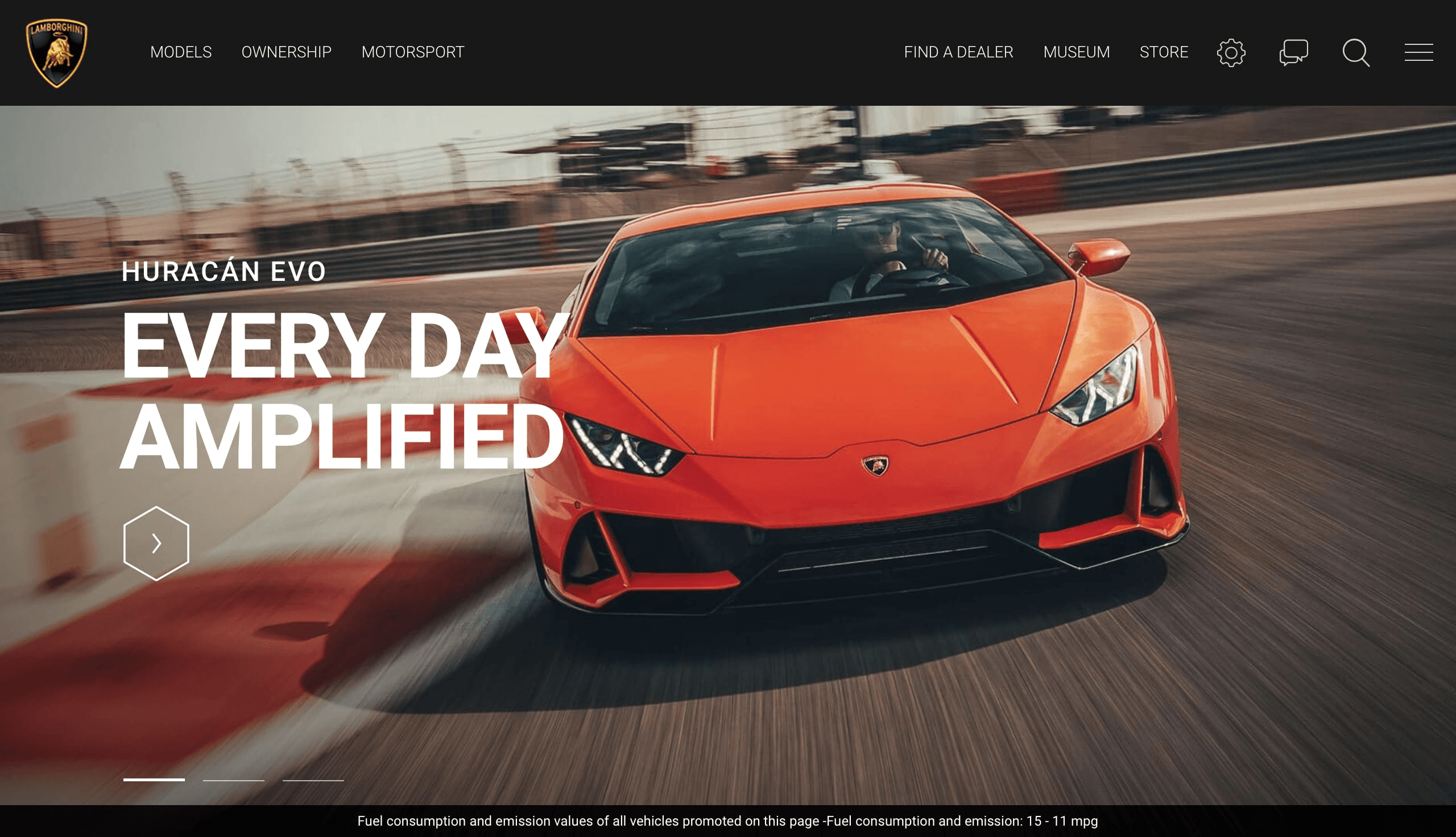
Volkswagen
One year into the noughties, Volkswagen might have forgotten their colour pallet when they designed their website. Sitting on a joy-sapping minimalist white background, users were only offered four options to explore: cars, vans, motorsport or careers.
Short but sweet, there is some credit due for what might be the most functional site on our list. Bonus points to any eagle-eyed readers that recognised the 'VW frog' which was a regular character in Volkswagen's early TV commercials and still hops around occasionally today.
In stark contrast, the current Volkswagen website is a stunning design upgrade with swish visuals that invigorate the senses while remaining ultra-functional and usable. Almost a Golf in website form, it's a far cry from their 2001 effort.
2001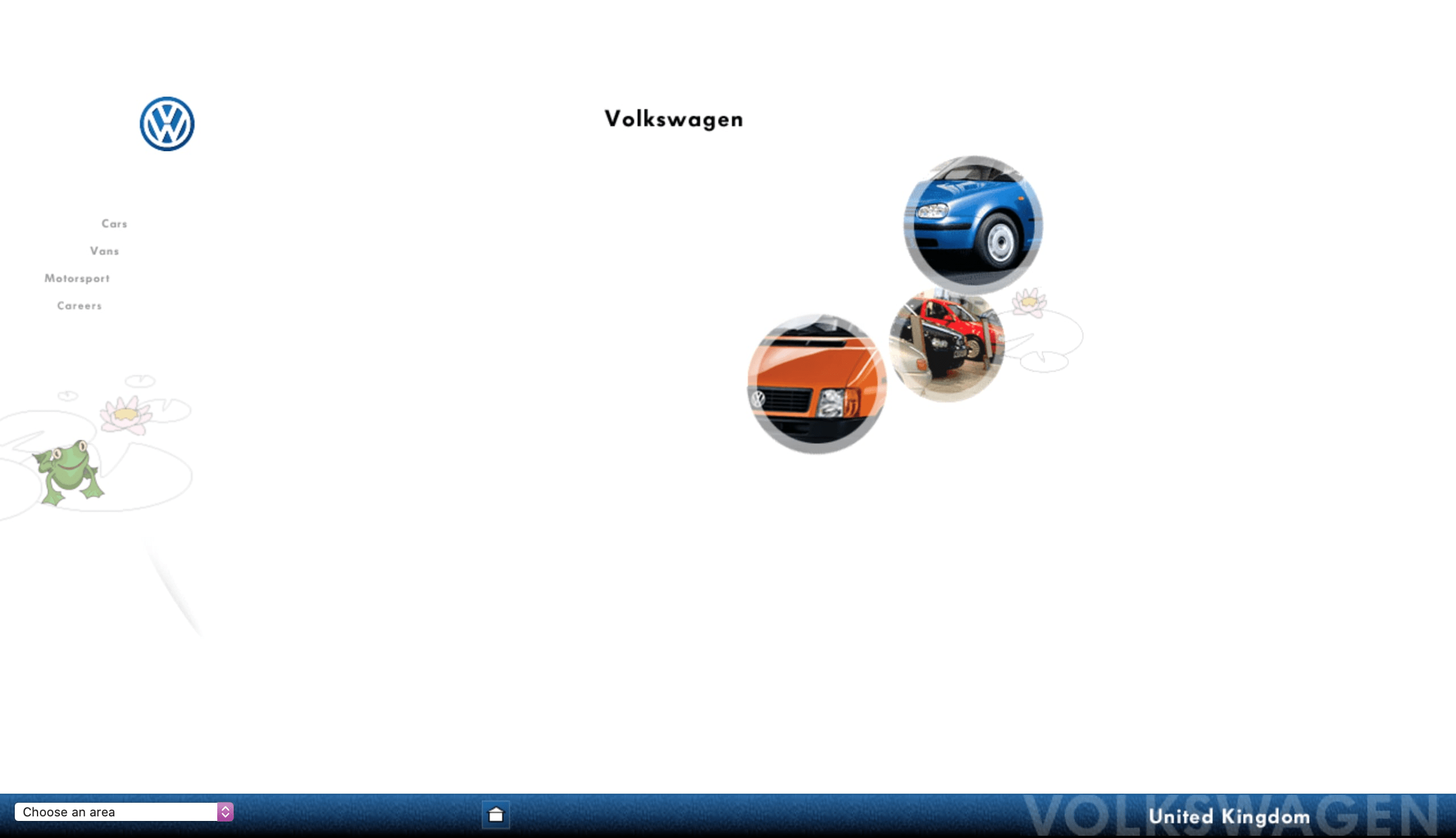
Today
Citroen
The now 21-year-old Picasso MPV took centre stage on Citroen’s website in 2000 at the peak of its powers as it accelerated to become one of Europe's most popular cars. The raspberry splashed background is a nod to Citroen's old logo which was an icon of the 90s and noughties.
Citroen only allowed two language choices twenty years ago, but travel to 2020 and there is lots to love on Citroen's slick new site with a 'Citroen International' header indicating the rapid emergence of the brand across the world. The Picasso sadly didn't make the leap in time, with the emergence of crossovers consigning it to history in 2010.
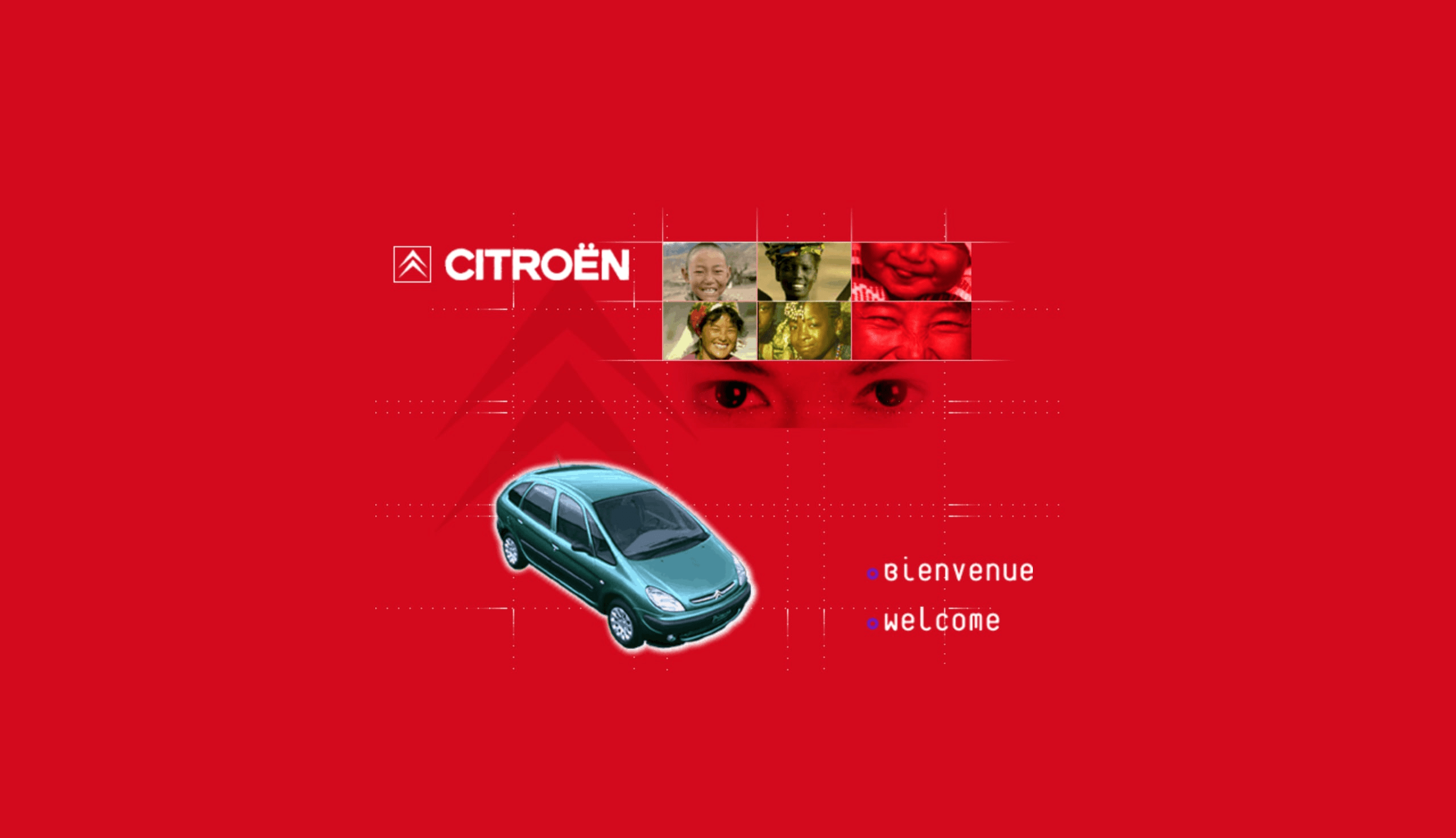
Today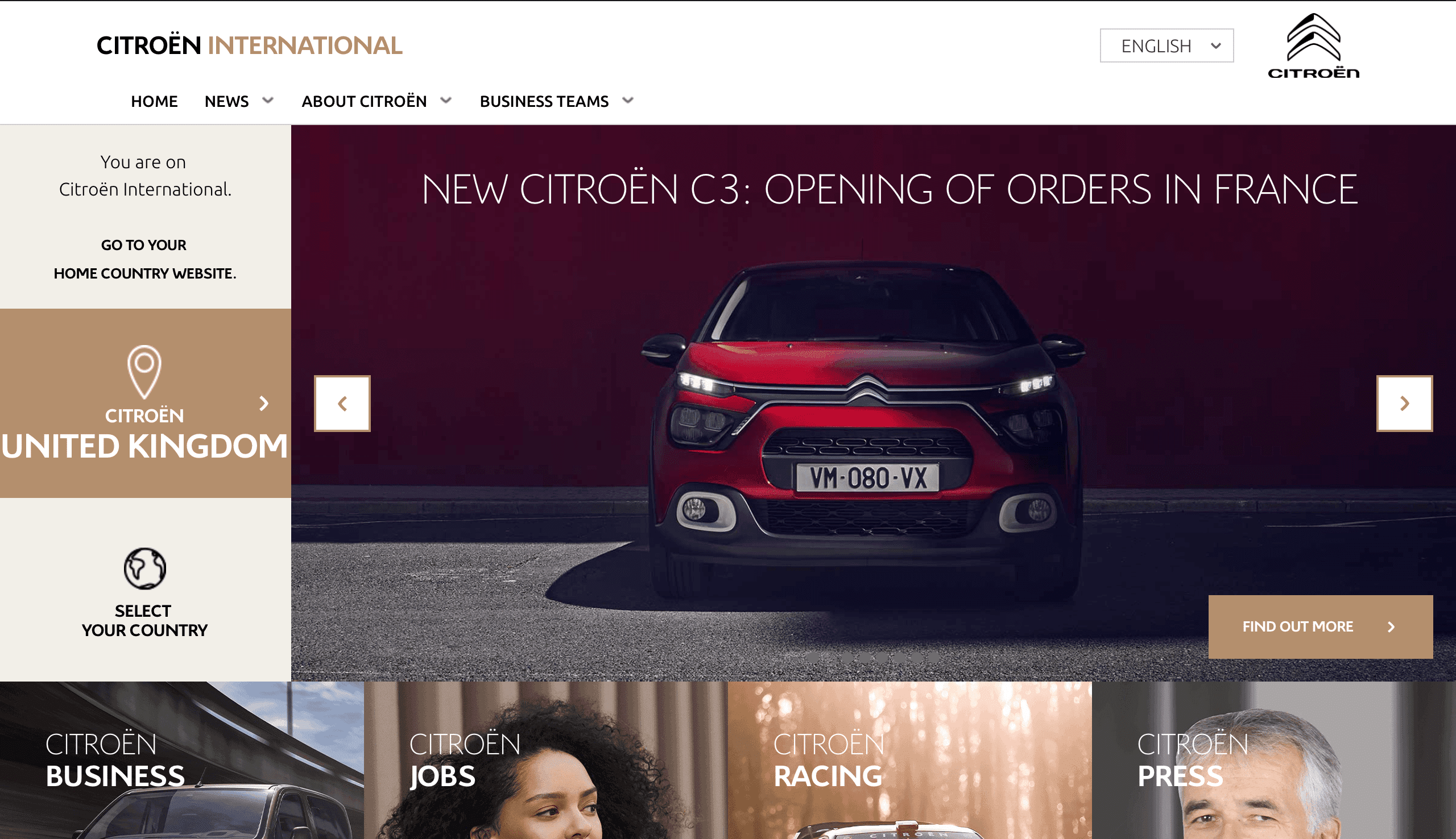
Renault
Renault's 2000 functional website looks more like the game Minesweeper than a functional automotive commerce platform. The featured images of two MPVs on the homepage harks back to the golden age of the multipurpose vehicle and gives a glimpse of consumer tastes just two decades back.
Evidence of the jaw-dropping website technology and design strides that have been made in recent years, the current Renault website offers users the chance to take a live electric car tour through a virtual showroom right from their sofa – which was simply a pipe dream back in the year 2000.
2000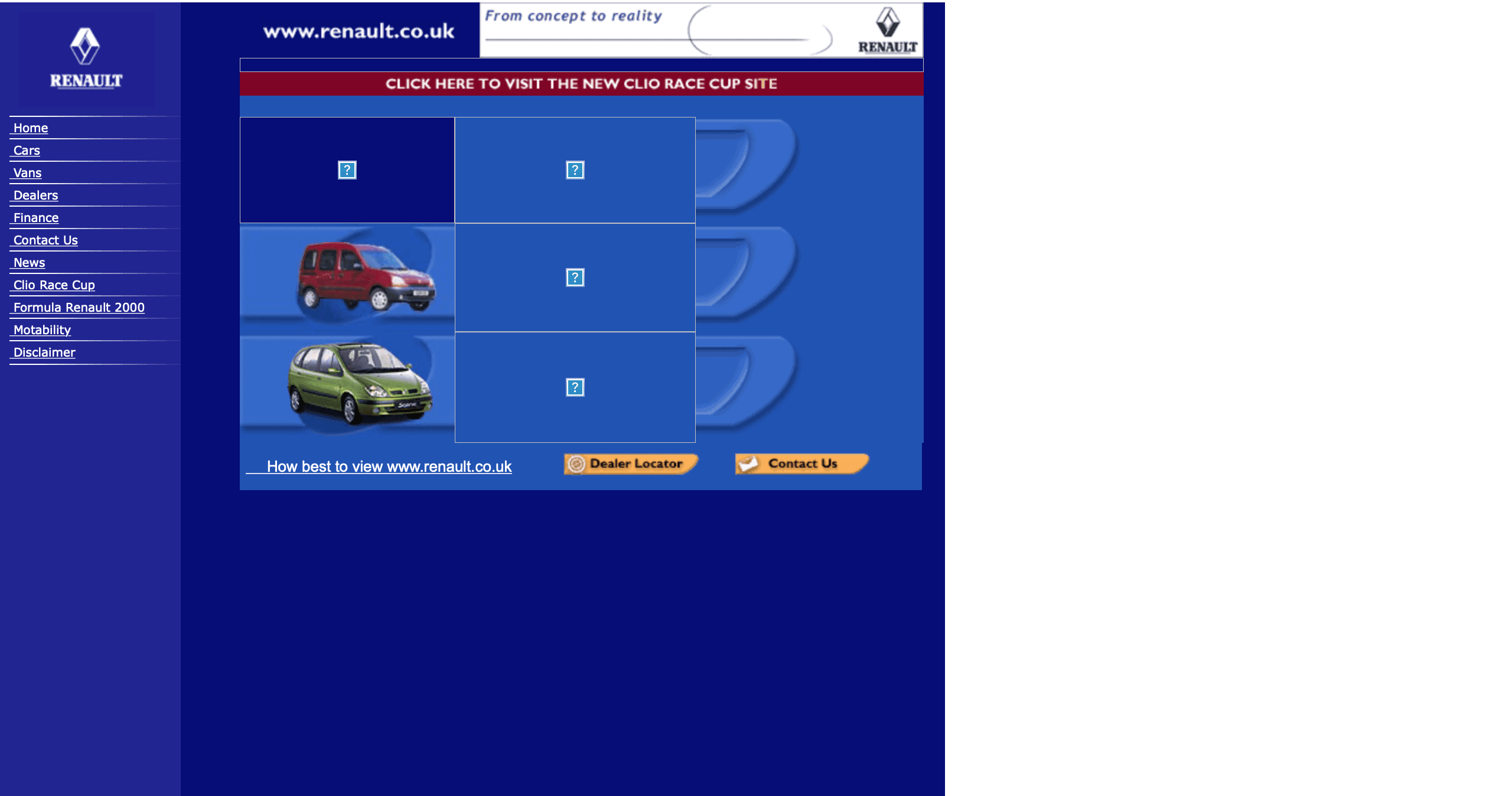
Today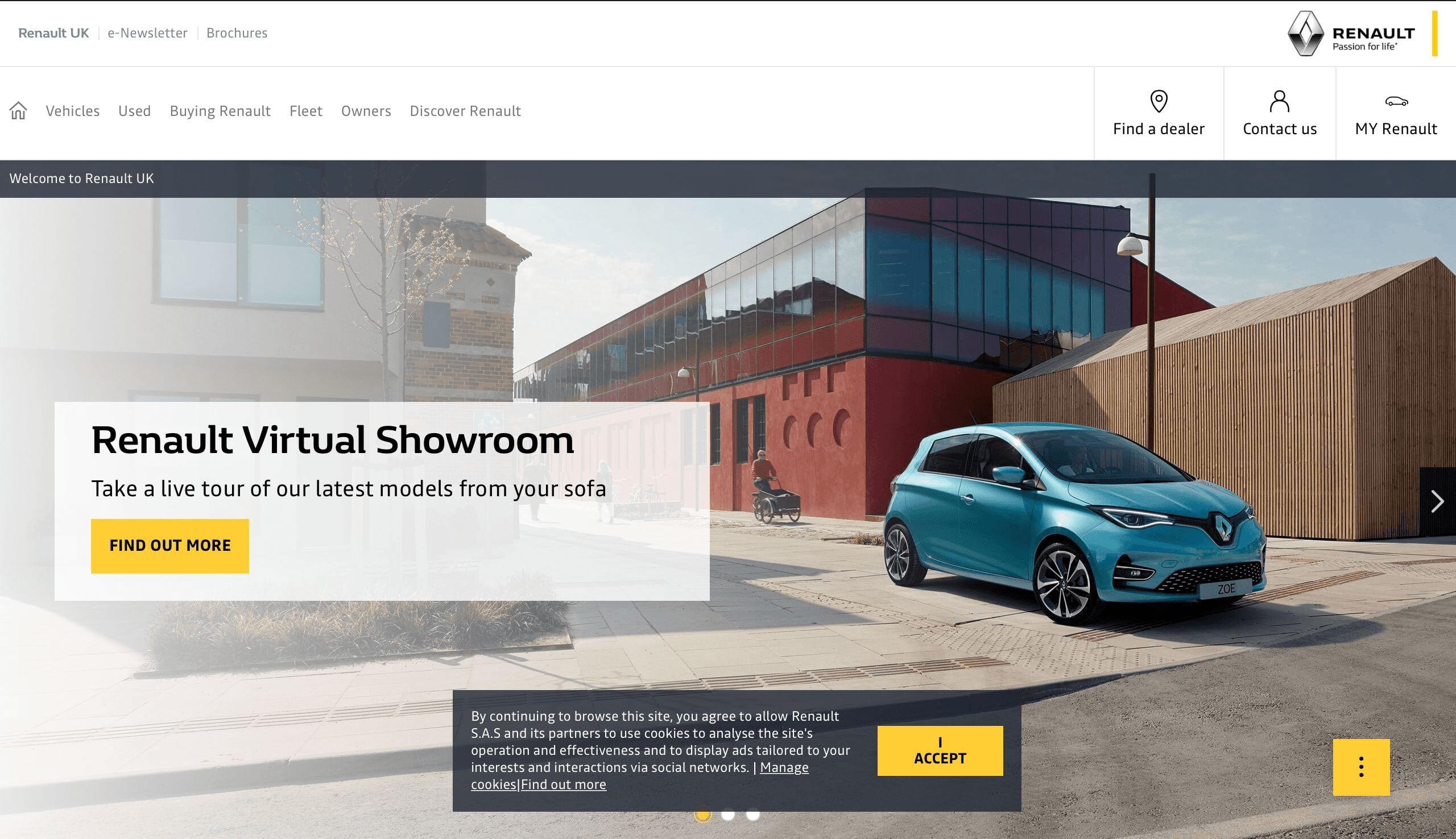
Fiat
There's a distinctly continental flavour to the 2001 Fiat website, with a garish 'you've been tango'd' orange background dominating the view. Fiat was far from a household name in the UK at this time and it's unlikely their "high-vis" colour web design had much success in changing this.
The words Hybrid, Electric or EVs would have invited blank stares in 2001, but cascade forward two decades and Fiat's current site embraces the alternative fuel variants of its Panda and 500 models. This is an incredible reflection of the growth of the Fiat brand in the UK and a telling reminder of the industry's rapidly accelerating move to more sustainable energy use and fuel.
2001
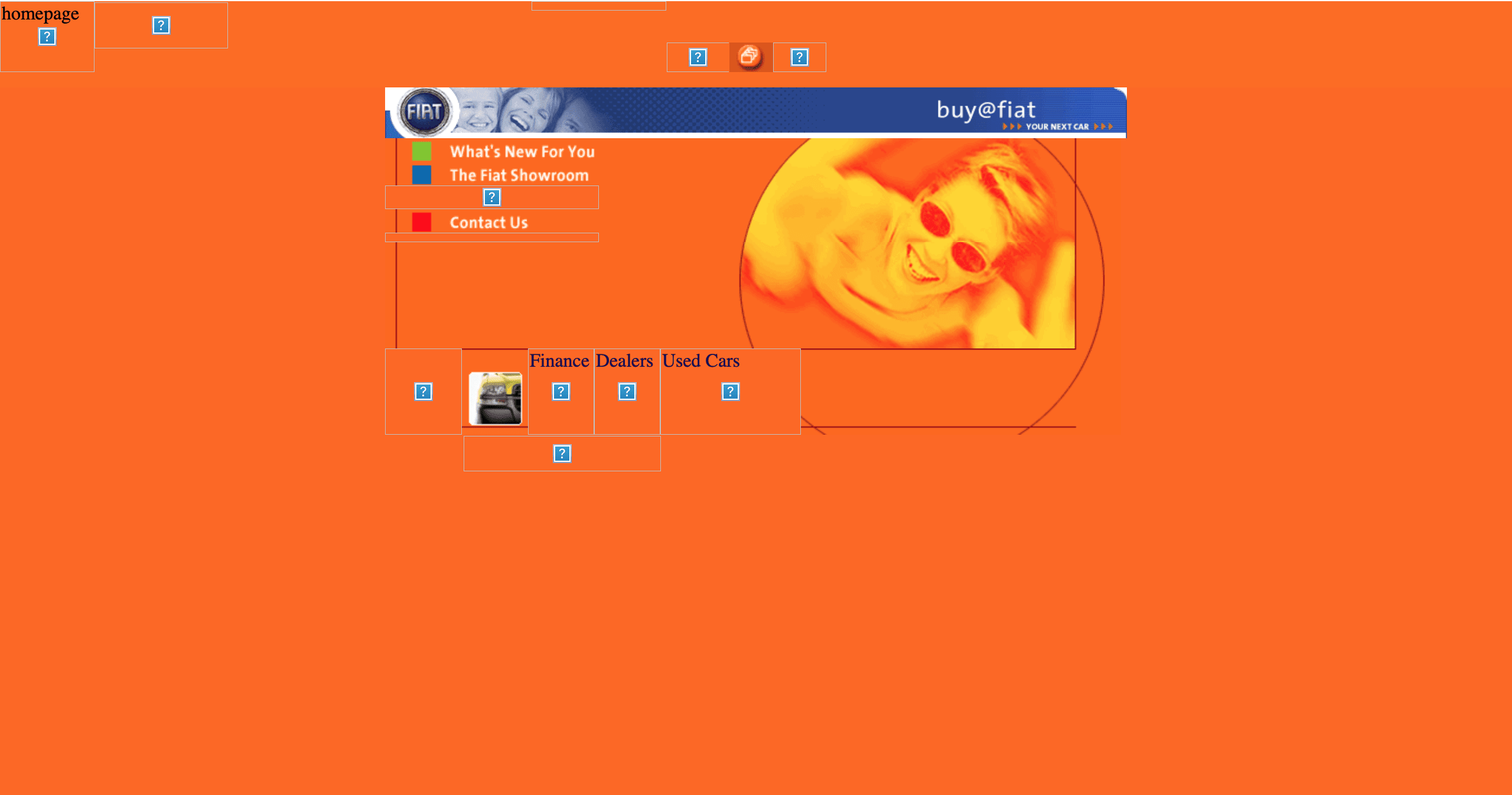
Today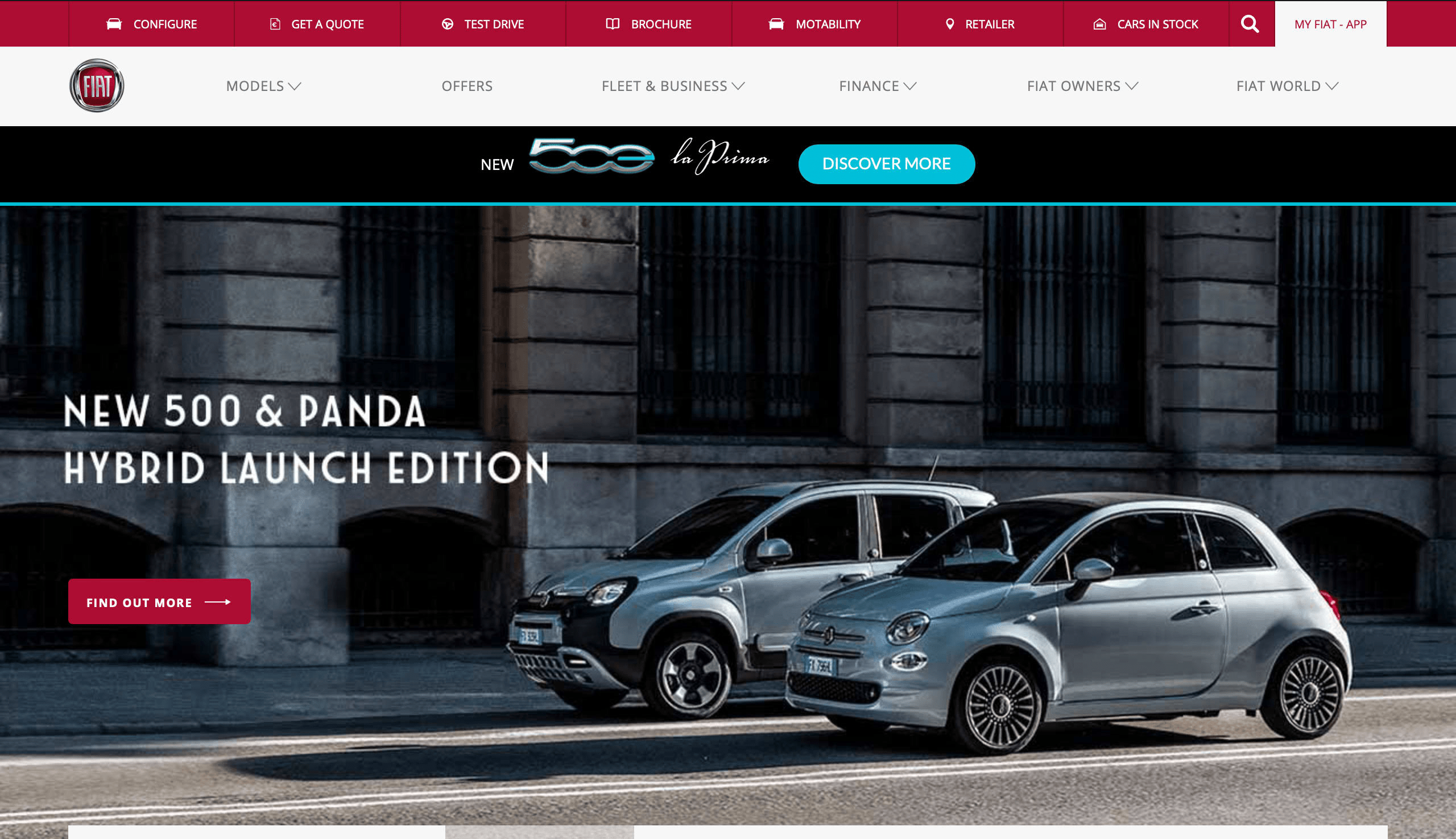
Vauxhall
The Vauxhall website looks a winner for usability, which is impressive considering it's the only site on our list from the 90s. With plenty of links and even a function to search what you're looking for, Vauxhall's website stands the test of time better than most.
However, there are some subtle quirks which suggest car sites hadn't quite grasped their purpose just yet, with a 'Traffic Net' page which gave the unique ability to get traffic news from a car manufacturer. In more recent times, Vauxhall now serve up a clean and crisp website that provides an insight into their shifting brand priorities, with commercial vans now taking a much more dominant position on the homepage.
1999
Today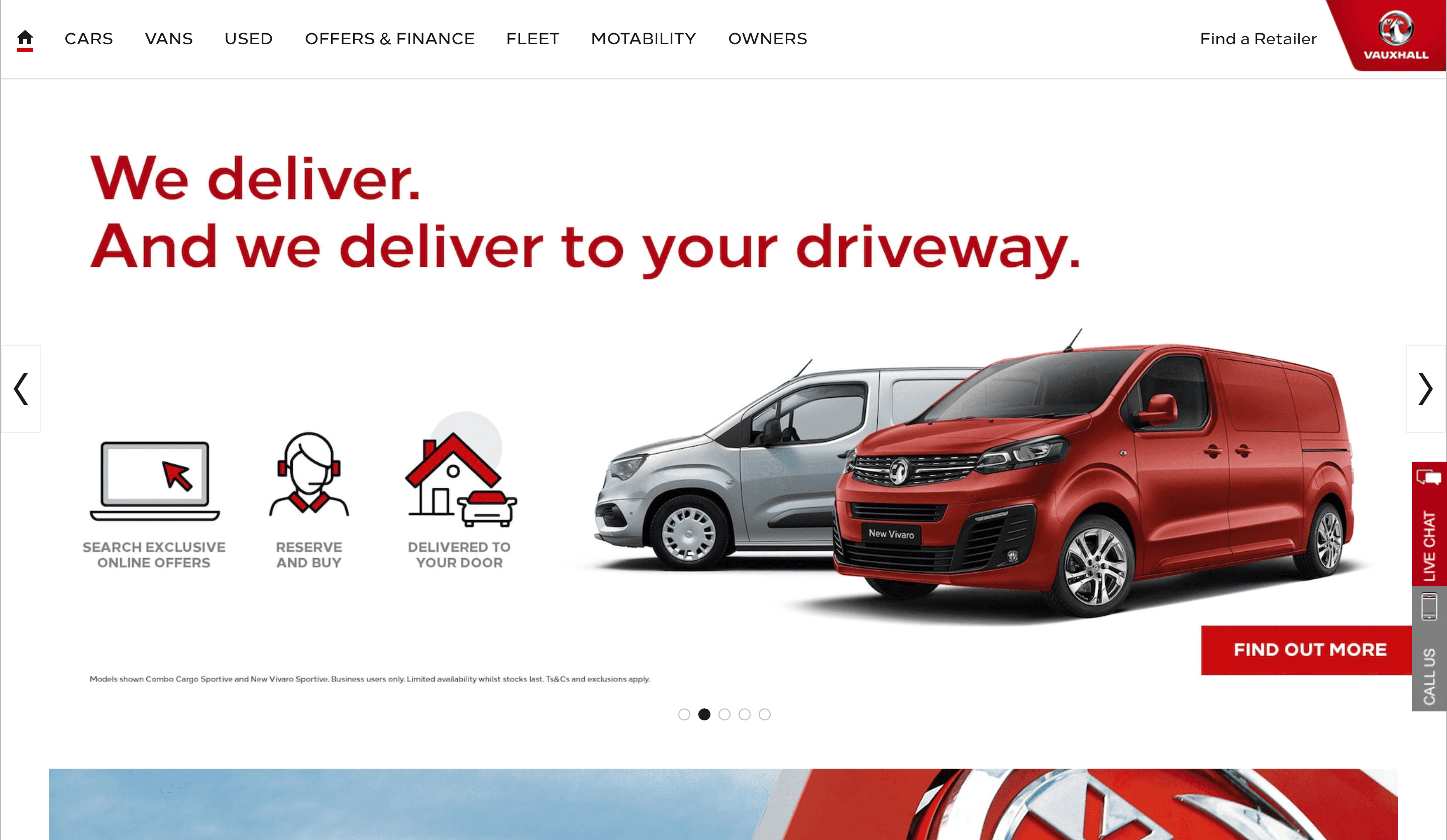
The Future Of Automotive Websites
What’s next for automotive websites? While they’ve already come a long way from painful dark backgrounds and stock photos - alongside the growth of electric cars over the coming decade the motoring industry has some incredibly exciting interactive developments in store for us in the coming years.
Use of Augmented Reality for Car Purchasing
AR will bridge the gap between a car being announced at a press conference and it hitting the showroom. Users will be able to use the camera of a tablet device to see a 3D render of the newly released car right in front of their eyes. AR could be used in this way months or even years before the first car rolls off the production line, creating a surreal experience for users. The technology will also allow users to change the colour of cars within the showroom live on the screen, along with other specifications.
Virtual Car Showrooms
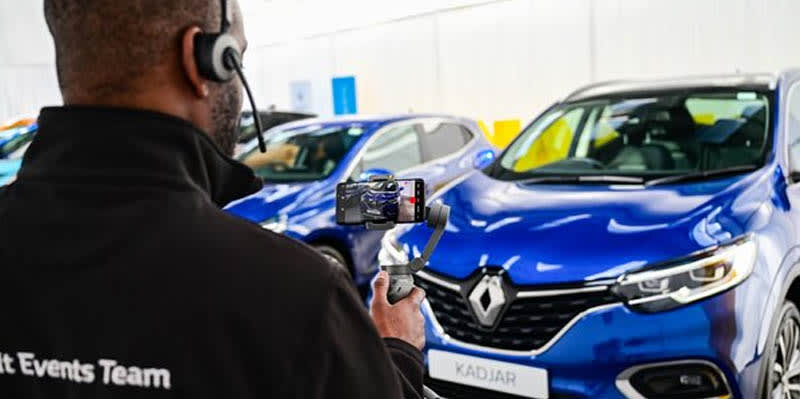
Replicating a real-life showroom, its virtual car showroom counterpart allows customers to make a purchasing decision without actually being there in person. Users are able to freely explore the cars on offer without restrictions and also enabling the automotive company to cut costs. Why build a physical showroom that only a small number of people can get to, when everyone around the world can access a virtual version online.
Virtual 3D Mechanical Interaction with Cars
Users will be able to interact with the internal components of a car using 3D renders, substitute them and test the impact of performance in real time. The same technology can also be used as an educational tool for those motorists who are less mechanically minded. Companies have already began implementing this in their showrooms. Delphi, a leading car part manufacturer, recently created an “X-ray Car Experience” which allowed users to interact with the internal components of a Honda Civic in real time.
Direct Car Purchasing Online
As we stand in 2020, Tesla are the only car company in the world who offer the ability to buy a vehicle exclusively on their website, without the need to interact with a salesperson. The Federal Trade Commission ranks dealership salespeople as one of the top ten most complained about professions, so why not cut out the middleman? Much controversy was generated when Elon Musk revealed this plan, with customers being asked to buy a car without even having a test drive. But so far, it seems to be working just fine.
Virtual Car Test Drives
Brands have already begun implementing the ability for a user to take a virtual test drive from the comfort of their home. Although still in their infancy, 360 degree panoramic videos are being experimented with tech such as the Honda Civic Real View Test Drive. This enables the user to virtually sit inside the car, use their mouse to rotate the screen and check out the rest of the interior such as the back seats and sunroof.















